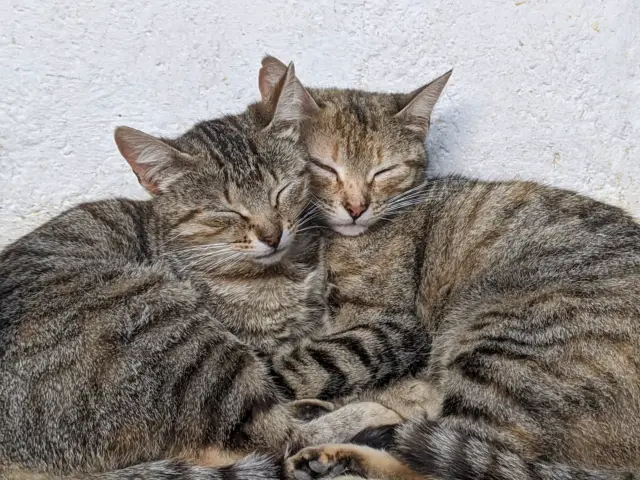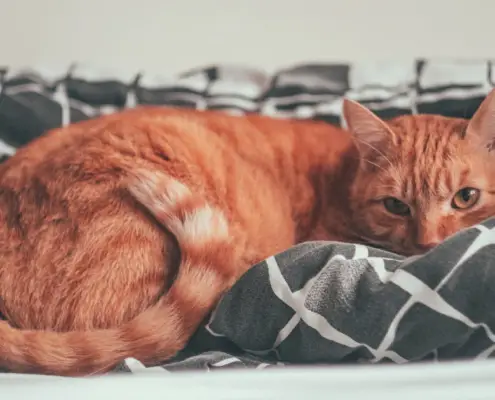
Cats have long been known for their mysterious and enigmatic nature. While they may seem aloof and independent, they actually possess a complex and nuanced system of communication. Understanding how cats communicate is key to strengthening the bond between humans and their feline companions. In this article, we will delve into the various ways cats communicate, from vocalizations to body language, scent marking, social interactions, and even explore any potential variations in communication across different breeds and regions.
Understanding Feline Communication
Cats communicate with each other and with humans through a combination of vocalizations, body language, and scent marking. While they may not have a spoken language like humans do, their communication is just as effective in conveying their needs, emotions, and intentions.
Vocalizations: Meows, Purrs, and Hisses
One of the most recognizable forms of cat communication is through vocalizations. Cats produce a wide range of sounds, each serving a different purpose. The most common vocalization is the meow, which is typically used to get the attention of humans. However, cats also have a repertoire of other sounds, such as purring, hissing, growling, and even chirping. Each vocalization carries a specific meaning, and with careful observation, it is possible to decipher the message behind the sound.
Body Language: Tail Movements, Ear Positions, and More
In addition to vocalizations, cats also communicate through their body language. Their tails, ears, eyes, and posture all play a crucial role in conveying their feelings and intentions. For example, a high, upright tail indicates a friendly and confident cat, while a low, tucked tail suggests fear or submission. Similarly, flattened ears and dilated pupils are signs of aggression or fear. By paying attention to these subtle cues, humans can better understand the emotional state of their feline friends and adjust their interactions accordingly.
Scent Marking: The Secret Language of Pheromones
Cats have a highly developed sense of smell, and they use scent marking as a form of communication. They have scent glands located in various parts of their bodies, including the cheeks, paws, and tail. By rubbing against objects or even humans, cats leave behind pheromones that convey information about their identity, territory, and reproductive status. This form of communication is particularly important in multi-cat households, where cats use scent marking to establish boundaries and maintain social hierarchies.
Social Interactions: How Cats Communicate with Each Other
Cats are not solitary animals; they are social creatures that form complex relationships with other cats. Through various behaviors such as grooming, play, and shared territory, cats establish and maintain social bonds. They also communicate through body postures and vocalizations when interacting with other cats. Understanding these social interactions can help humans create a harmonious environment for their feline companions and prevent conflicts between cats.
Cultural Differences: Variations in Cat Communication Across Breeds and Regions
While cats share a common set of communication methods, there can be variations in how they communicate across different breeds and regions. Factors such as genetics, upbringing, and exposure to different environments can influence a cat’s communication style. For example, certain breeds may be more vocal than others, while cats from different regions may have distinct body language cues. It is important for cat owners to be aware of these potential variations and adapt their communication strategies accordingly.
Can Cats Understand Human Language?
While cats may not understand human language in the same way we do, they are highly perceptive creatures and can pick up on our tone of voice, body language, and facial expressions. Cats are known to respond to their owners’ voices, and some can even learn to associate certain words or phrases with specific actions or rewards. However, it is important to remember that cats primarily rely on their own communication methods and cues, and it is up to humans to bridge the gap by learning to understand and interpret their feline friends’ unique language.
Tips for Better Communication with Your Feline Friend
To enhance communication with your cat, it is essential to observe, listen, and respond to their cues. Here are some tips to improve your communication with your feline friend:
- Pay attention to their body language: Observe your cat’s tail movements, ear positions, and overall posture to understand their mood and intentions.
- Respect their personal space: Cats value their personal boundaries, so avoid forcing physical contact and let them come to you when they are ready.
- Use positive reinforcement: Reward desired behaviors with treats or affection to establish a positive association and encourage good communication.
- Provide a safe and stimulating environment: Cats thrive in an environment that offers opportunities for play, exploration, and relaxation.
- Establish a routine: Cats are creatures of habit, so maintaining a consistent daily routine can help them feel secure and understood.
The Beauty of the Unique Language of Cats
While cats may not speak the same language as humans, they possess a rich and intricate system of communication that is essential for their survival and social interactions. By understanding and respecting their unique language, humans can forge deeper connections with their feline friends and create a harmonious living environment for both species. Remember, communication is a two-way street, and by actively listening and responding to our cats, we can build a stronger bond based on trust and understanding.
If you enjoyed my article, I would appreciate you sharing it with your network.

Sima Ndlebe
Sima writes for CatBuzz. He is interested in Cats, Health and Fitness, and Entrepreneurship.
Published: 20 May 2024



